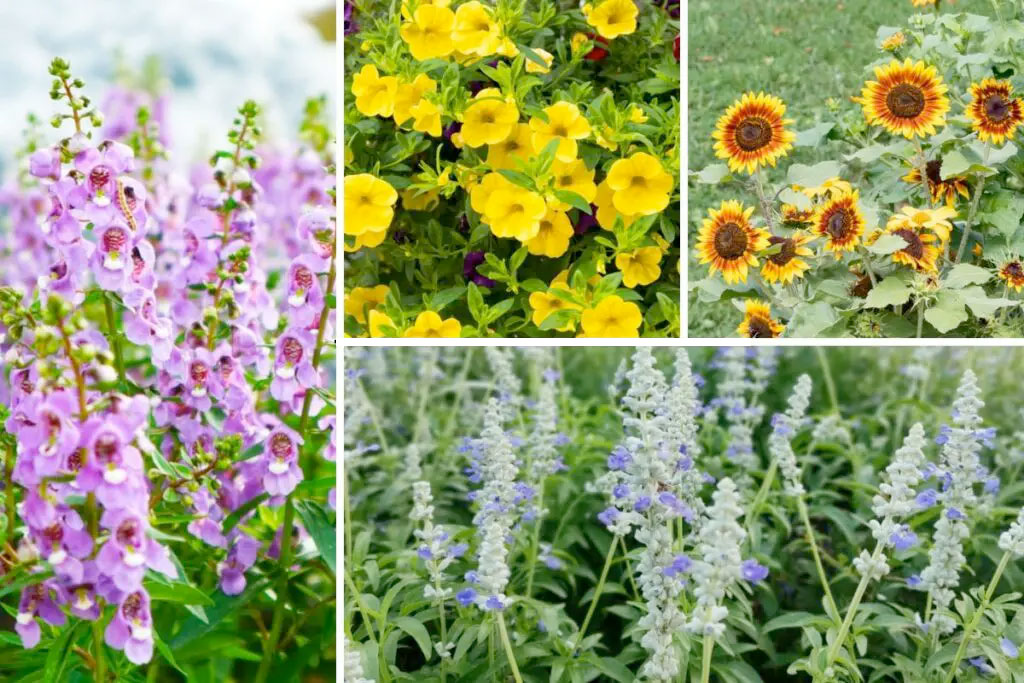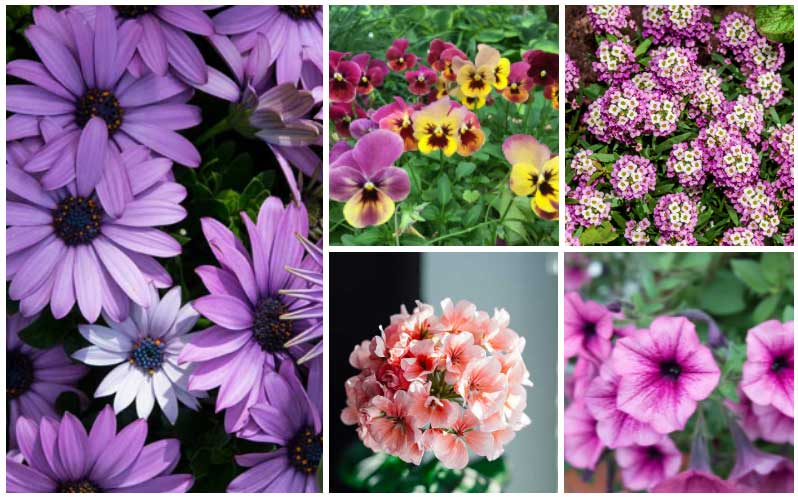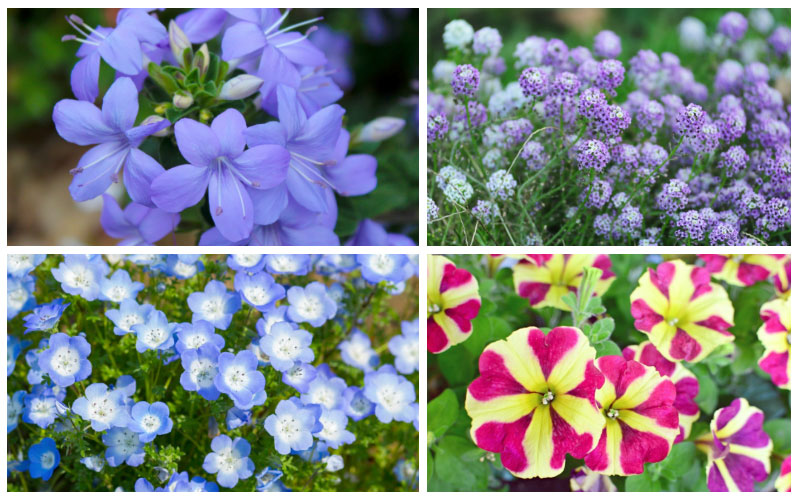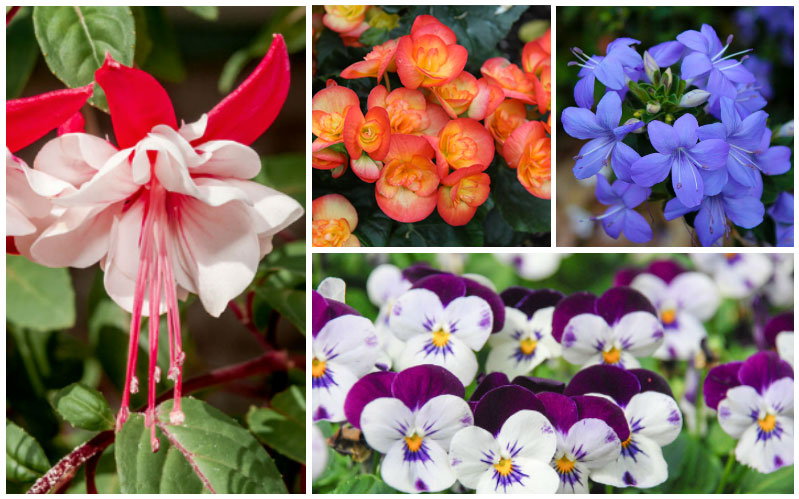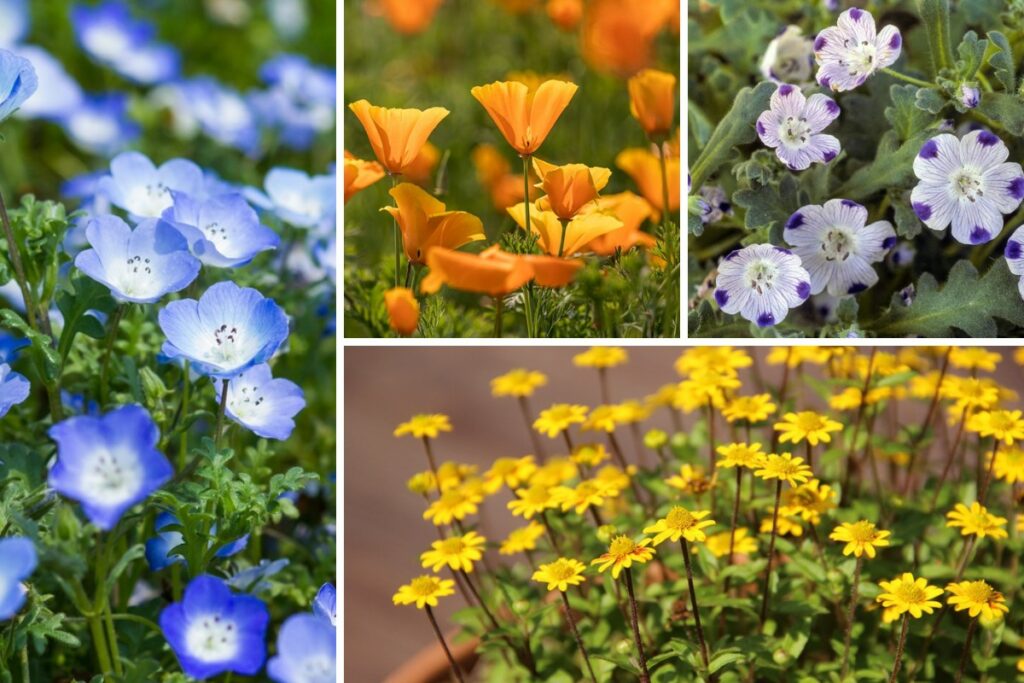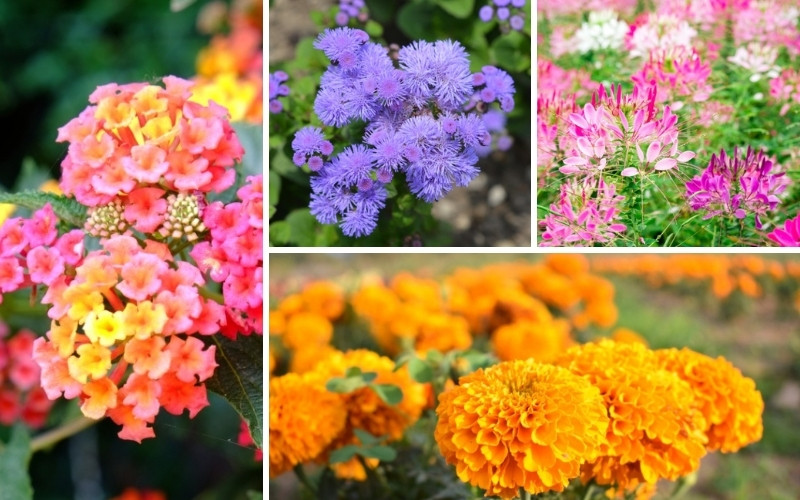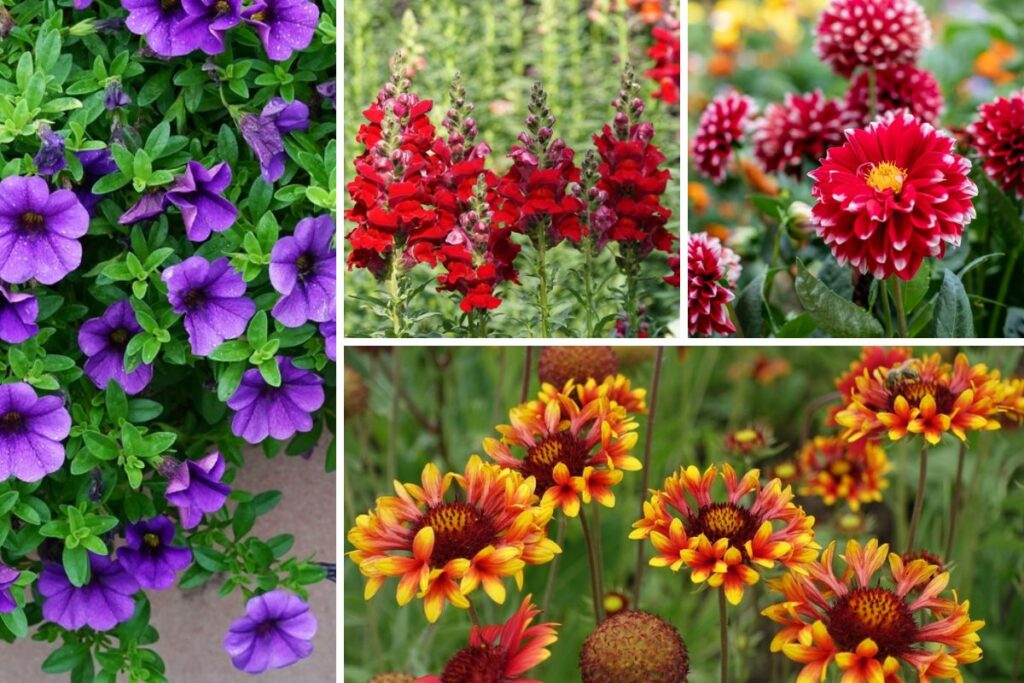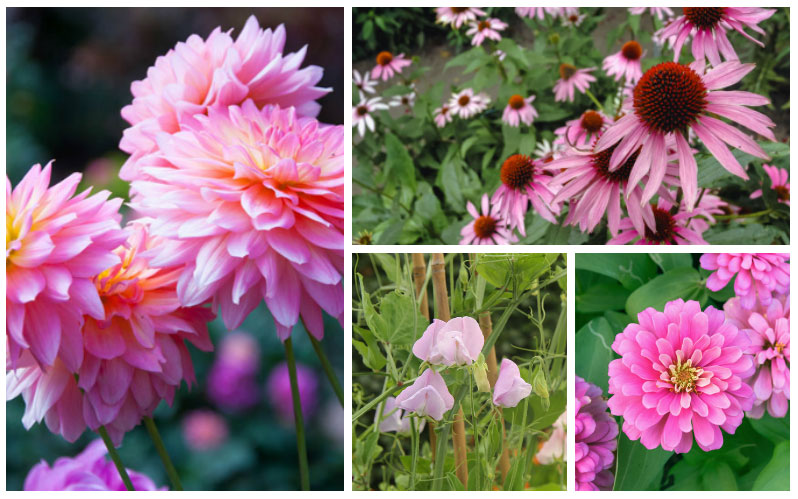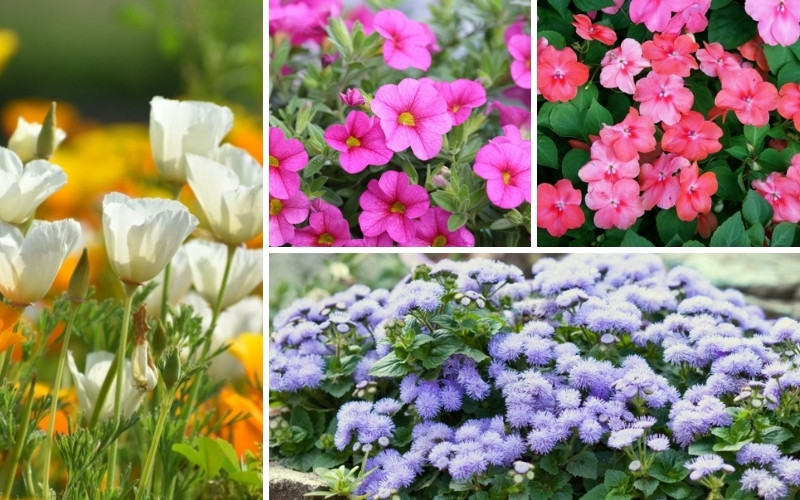If you’re a resident of The Centennial State, there’s a plethora of beautiful plants that you can grow in your garden.
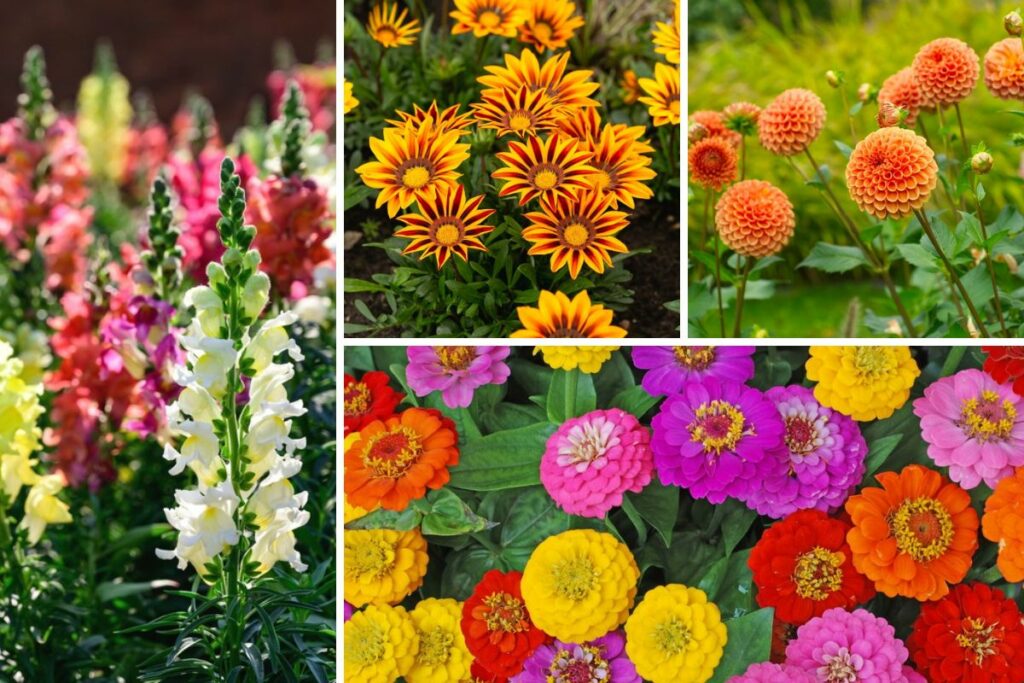
Annuals that grow well in Colorado include dahlias, impatiens, and salvia. These plants add color to a garden and thrive in direct sunlight and well-drained soil.
Read on to learn more about ten of the best annuals to grow in your Colorado garden.
1. Dahlias
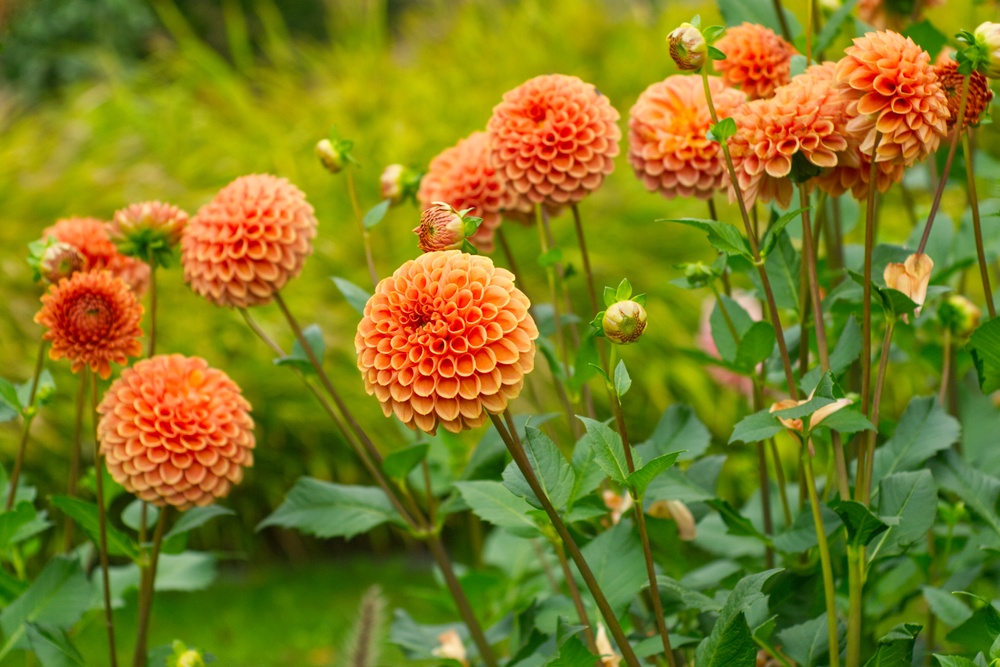
Dahlias are one of the best annuals to grow in Colorado. These plants’ extensive foliage is undoubtedly the star of the show. However, it’s not all these plants have to offer.
From the middle of summer to the start of fall, dahlias bloom and produce dazzling flowers in an array of pink shades.
These plants will grow best when exposed to the conditions they’re acclimated to in their natural habitat. Dahlias are indigenous to the mountain ranges of Central America. Therefore, they require lots of bright, direct sunlight.
They also need to be planted in well-drained soil and watered at least twice per week.
2. Snapdragons
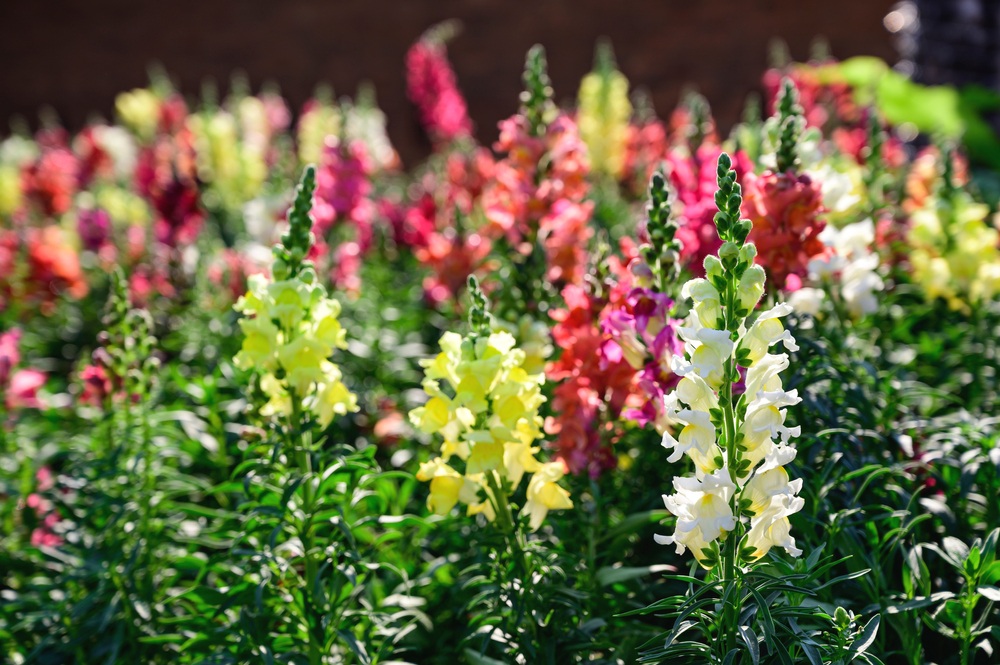
The snapdragon plant is another great option for an annual to grow in Colorado. Snapdragons come in various colors, including pink, orange, yellow, red, and purple. These beautiful flowers are shaped like dragon mouths, hence the plant’s name.
When these plants bloom during late winter and early spring, they’ll give your garden an exotic aesthetic.
For your snapdragons to thrive, you’ll need to grow them in an area with well-drained soil and direct sunlight. Additionally, you should water these plants once every week.
3. Petunias
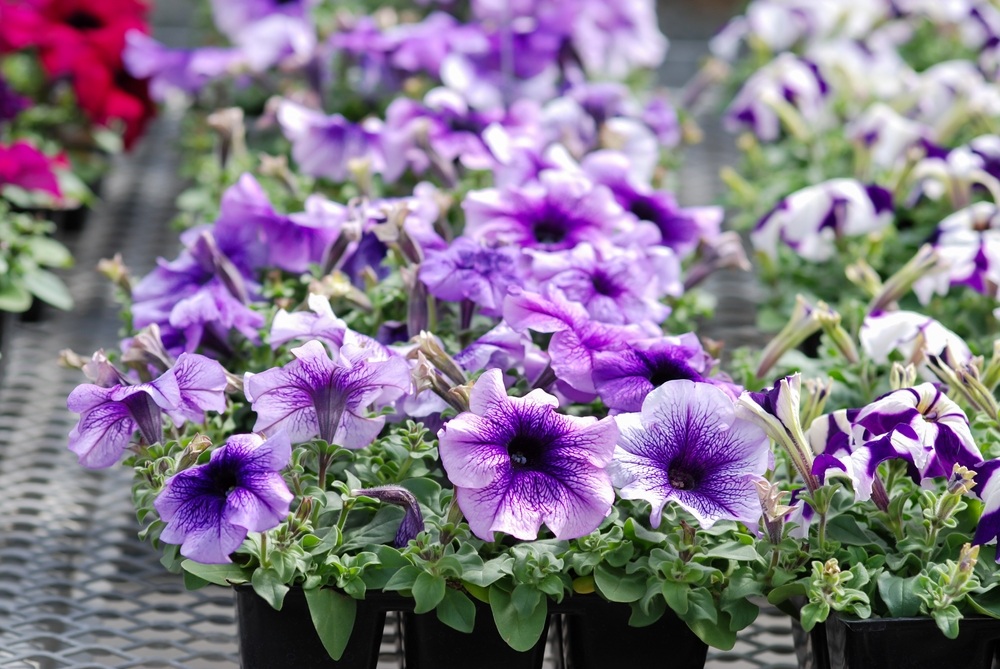
If you’re looking for a versatile plant that you can grow in a variety of settings, then petunias might be the way to go.
These plants can thrive in many different lighting conditions. This allows them to fare well, whether planted straight in the ground, in hanging baskets, or window boxes.
However, petunias are quite demanding in terms of their watering requirements. These plants need to be watered twice a day, especially if grown in a container. Furthermore, make sure that your petunias’ soil is well-drained.
If you satisfy all their needs, petunias will add a stunning splash of color to your garden with their red, white, purple, yellow, or pink flowers.
4. Zinnias
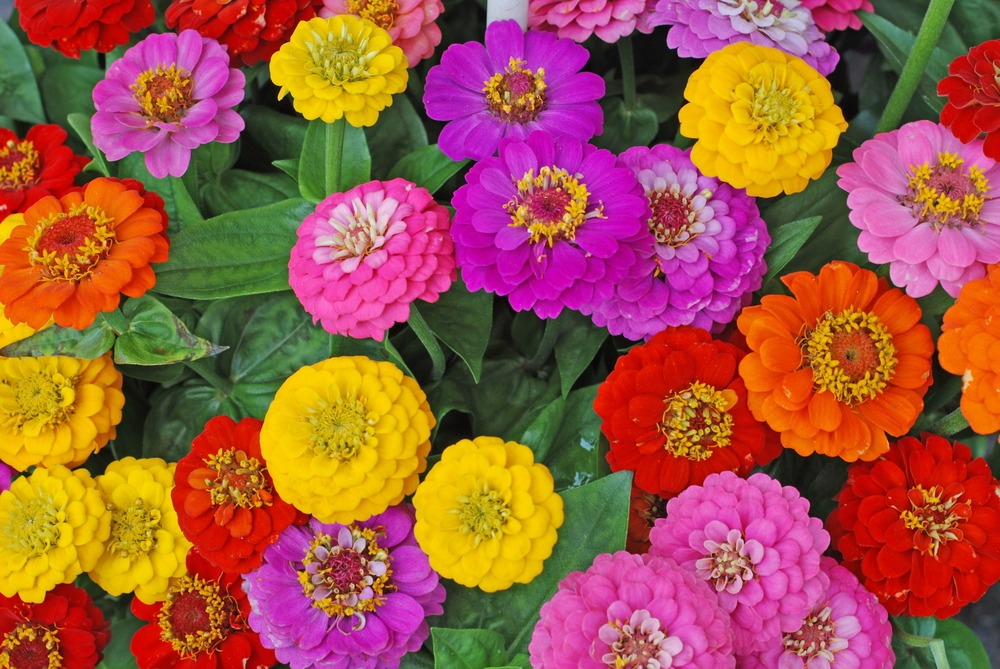
When the summer rolls by and your zinnias are in full bloom, their flowers will beautify your garden like few others can.
Regardless of whether you’re growing purple, pink, yellow, or red zinnias, you’ll want to relax in your backyard all day and gaze at them.
For these plants’ blooms to reach their full potential, you should provide them with plenty of direct sunlight and plant them in well-drained soil to avoid root rot.
Additionally, zinnias have a variety of uses. These plants are known to be terrific antioxidants and antifungals, for example .
5. Marigolds
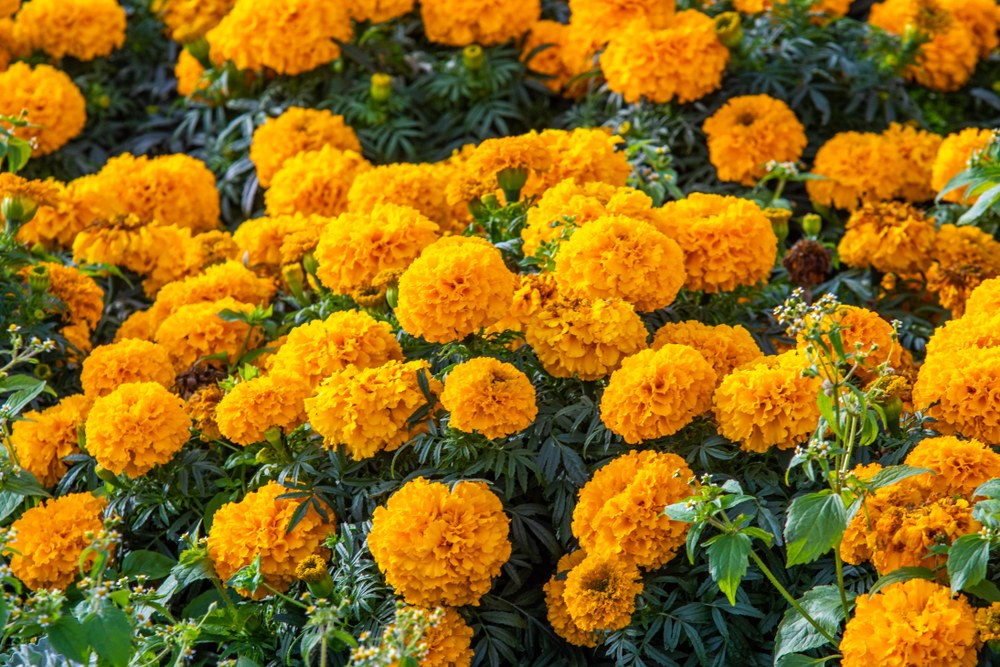
If you’re looking for a plant that’ll not only brighten up your backyard but will also protect your other plants from harmful pests, look no further than marigolds.
These plants have breathtaking orange and yellow flowers that’ll create a wonderful contrast if you have plants of darker shades already planted.
In addition to this, marigolds are notorious for their ability to keep pests, such as flies and mosquitos, at bay. They’re excellent at bringing in pollinating insects too.
To reap the full benefits of marigolds, you should provide them with the environment they need to thrive. These conditions are well-drained soil and direct sunlight.
6. Impatiens
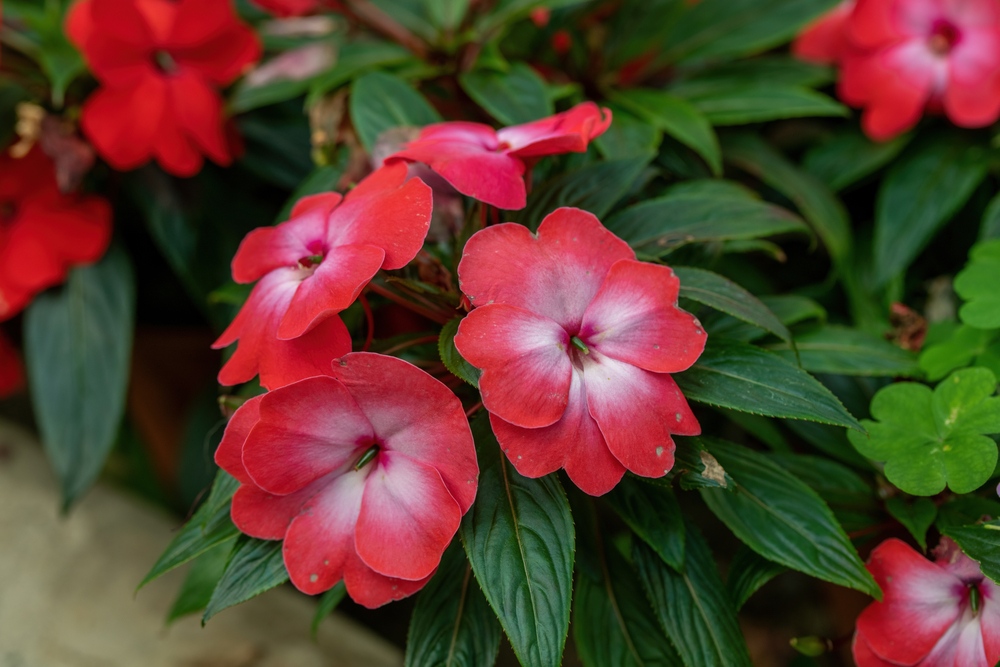
The impatiens plant is yet another annual that fares well in Colorado.
This plant blooms from spring to fall, producing red, pink, purple, white, or orange flowers. During this time, impatiens are truly a sight to behold when their flowers are cascading down from hanging baskets and window boxes.
Additionally, these plants are rather low-maintenance. You can plant them pretty much anywhere in your garden due to their ability to thrive in shaded conditions.
You should also water your impatiens daily and ensure their soil is well-drained.
7. Geraniums
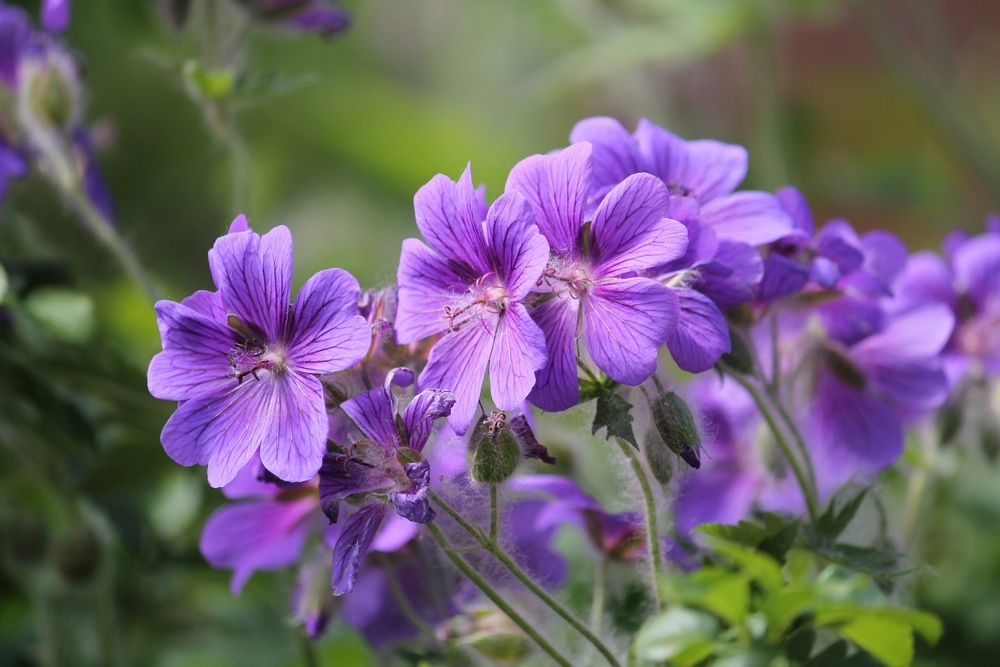
Are you not that experienced in growing plants at home? If you are, then planting geraniums is a great way to start getting your feet wet. This is because geraniums don’t require that much care to thrive.
These plants only need to be watered when their soil feels dry. Plus, make sure to provide them with bright, direct sunlight.
The fact that geraniums aren’t demanding doesn’t mean that they won’t enhance your garden’s aesthetic. When these plants bloom in late spring and early summer, they produce breathtaking white, red, or pink flowers.
8. Begonias
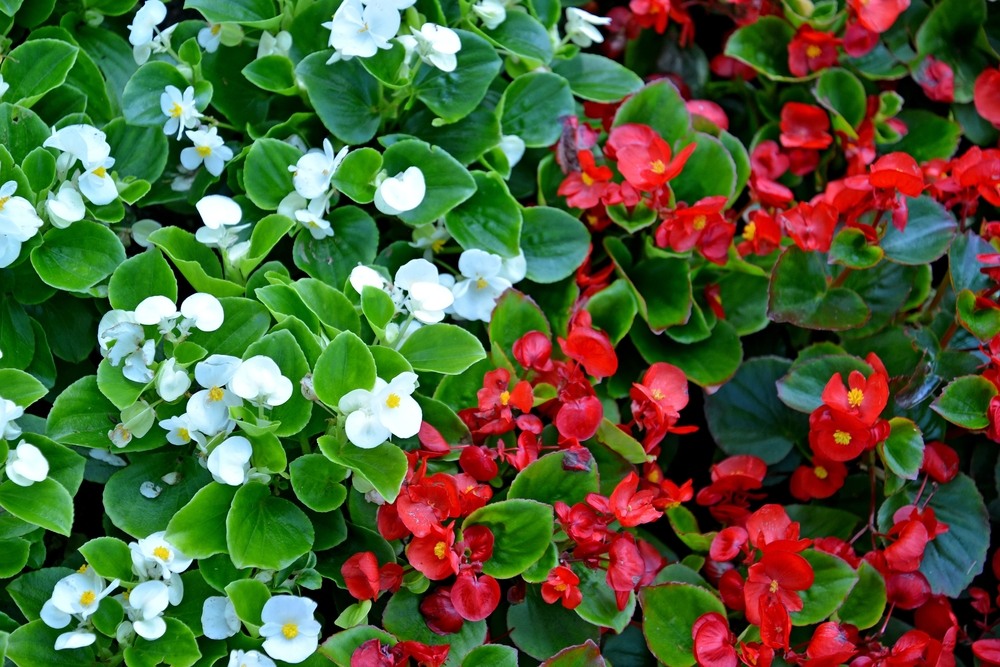
Another relatively low-maintenance option to consider is begonias.
These plants only need watering once or twice a week. Additionally, they require around five hours of indirect sunlight each day.
When these conditions are satisfied, begonias bloom from the start of summer to the start of winter. They fill your garden with dazzling flowers that can come in white, yellow, orange, or pink.
What makes these plants even more fascinating is that each color has a different symbological significance.
9. Salvia
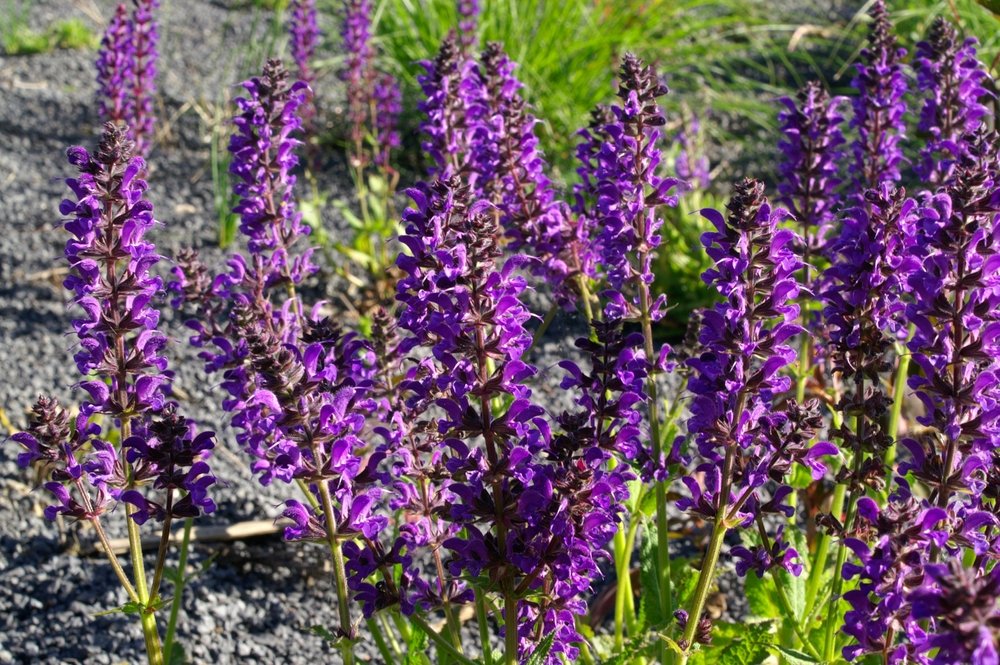
Are you in search of a plant that’ll enhance the aromatic experience in your garden? If so, then salvia is just what the doctor ordered!
Otherwise known as sage, this plant’s smell is breathtaking. Additionally, it has plenty of visual appeal as well, what with the purple flowers it produces when it blooms in early summer.
Another perk of salvia is that its scent is great at repelling pests, such as snails and beetles. Therefore, salvia is an excellent companion plant to add as protection for your other flowers.
For your salvia to grow well, it needs lots of direct sunlight. Furthermore, you should water this plant once or twice a week.
10. Gazanias
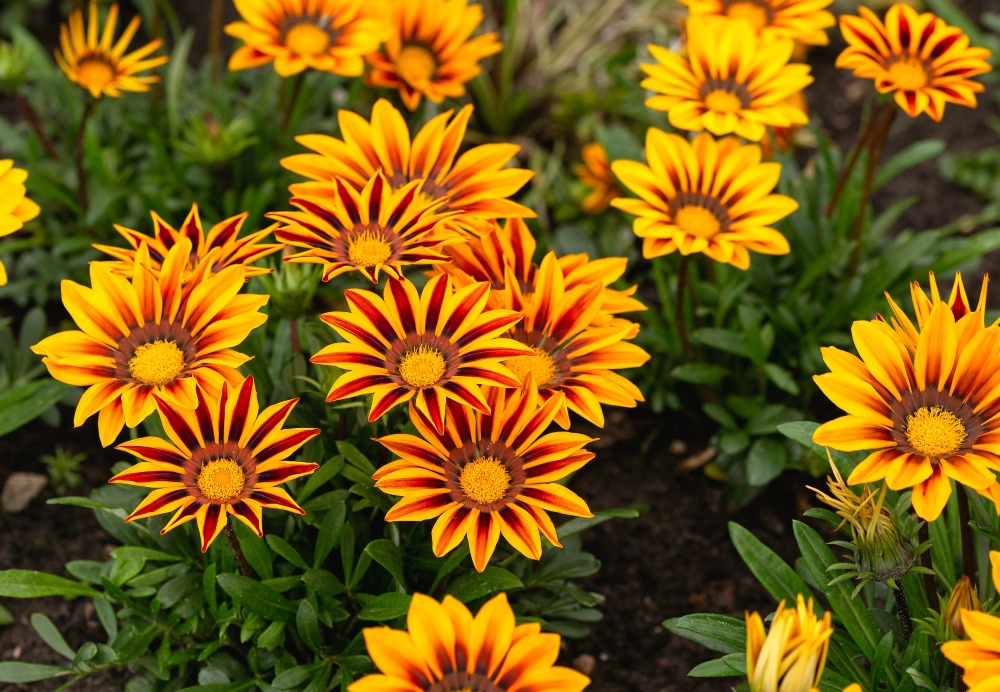
Last but not least, we have gazanias.
In a similar fashion to snapdragons, these plants will give your garden a tropical vibe with their large bright yellow, red, or orange flowers. You can expect these flowers to inhabit your garden all the way from the start of summer to the beginning of winter.
To cap things off, gazanias are incredibly adaptable and durable. These plants can grow in almost any soil and only need watering once a week or when their soil dries out.





